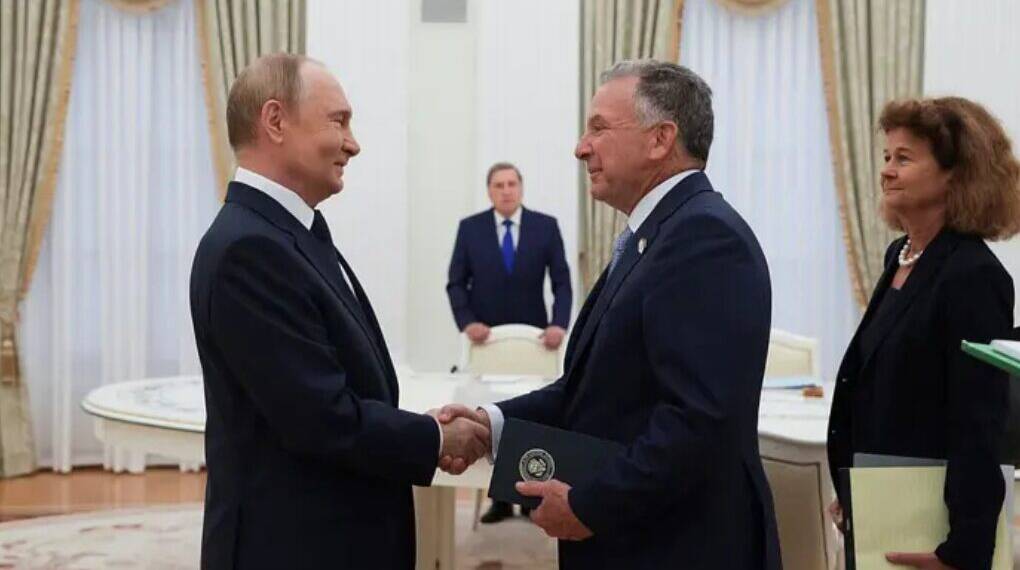With just two days remaining before the deadline imposed by U.S. President Donald Trump for Russia to halt its offensive in Ukraine or face sweeping economic sanctions, Russian President Vladimir Putin met with U.S. Special Envoy Steve Witkoff at the Kremlin on Wednesday in a high-stakes diplomatic effort to deescalate one of Europe’s most brutal and enduring conflicts.
The meeting comes amid a marked escalation in Russia’s military campaign and as diplomatic talks have repeatedly failed to yield a ceasefire. The Kremlin released footage showing Putin shaking hands with Witkoff but offered no further details about the substance of the talks.
The visit marks the most direct engagement between Washington and Moscow in months and follows Trump’s intensified pressure on the Kremlin to halt its aggression or face “severe tariffs and economic penalties,” which could also target nations purchasing Russian oil, including key trade partners China and India.
A Tense Diplomatic Moment
Speaking ahead of the meeting, Trump told reporters: “We have a meeting with Russia tomorrow. We’re going to see what happens. We’ll make that determination at that time,” referring to possible retaliatory measures if Putin fails to move toward peace.
Witkoff, accompanied by Russian investment envoy Kirill Dmitriev, was seen earlier walking through Moscow’s Zaryadye Park, a symbolic backdrop near the Kremlin that emphasized the diplomatic sensitivity of the moment. Dmitriev has played a central role in the now-stalled Russia-Ukraine peace negotiations held in Istanbul earlier this year.
Kremlin spokesman Dmitry Peskov described the meeting as “important, substantive, and very useful,” indicating that Moscow still values dialogue with Washington — despite rapidly deteriorating relations and mounting nuclear rhetoric from both sides.
The Escalation in Ukraine
While talks continue, the situation on the ground in Ukraine grows more dire. Russian forces have ramped up long-range drone and missile strikes to record levels, with a particularly deadly assault on Tuesday night in Ukraine’s Zaporizhzhia region killing at least two civilians, including children, and injuring 12.
“There is zero military sense in this strike. Only cruelty to intimidate,” President Volodymyr Zelenskyy said on Telegram.
Ukrainian and Western officials say Putin is intentionally stalling for time while continuing to make incremental but costly territorial gains. Analysts warn the front lines are under immense pressure, though Ukraine’s defenses have not collapsed.
Zelenskyy has called for greater Western involvement, including stronger sanctions and “regime change” pressure on Moscow. “It is very important to strengthen all the levers in the arsenal of the United States, Europe, and the G7 so that a ceasefire truly comes into effect immediately,” he said on Wednesday.
The Threat of Sanctions – and a Wider Conflict
Trump has threatened to impose “secondary tariffs” on countries that continue to trade with Russia if it does not de-escalate by Friday. While he has yet to outline the specifics, such measures could severely disrupt global markets and strain U.S. relations with key allies and trade partners.
Trump has also expressed doubt about the overall effectiveness of sanctions, noting, “They’re wily characters,” about the Kremlin’s historic ability to bypass international penalties.
Meanwhile, Russia has responded with sharp rhetoric and military posturing. On Monday, Putin announced the operational deployment of new hypersonic missiles, which he claimed NATO defenses cannot intercept. Simultaneously, Russia lifted a moratorium on deploying intermediate-range nuclear-capable missiles, accusing the U.S. of positioning similar weapons in Europe.
The Kremlin also reacted with alarm after Trump revealed the deployment of two U.S. nuclear submarines to an undisclosed region, likely in proximity to Europe or the Arctic. While Trump did not specify whether the submarines were nuclear-powered or nuclear-armed, the move has sharply raised tensions.
Former Russian President Dmitry Medvedev warned that continued Western pressure could bring the U.S. and Russia closer to direct military confrontation. The Center for European Policy Analysis echoed the concern in a report this week, citing Russia’s growing military presence along its western borders as “clear signs” of preparation for a broader conflict with NATO.
The Road Ahead
With Trump’s deadline set to expire Friday, international attention is now focused on the aftermath of Witkoff’s visit. Analysts say a breakthrough is unlikely, especially as Putin has shown no sign of backing down. His public remarks continue to emphasize Russia’s military resilience and strategic superiority, while Zelenskyy maintains that only sustained external pressure will bring Moscow to the negotiating table in good faith.
Whether Trump’s threat of economic retaliation will yield results or push both nations further toward confrontation remains uncertain.
For now, the world waits as the clock ticks down to yet another pivotal moment in the war that has reshaped Europe’s security landscape and tested the limits of U.S.-Russia diplomacy.








